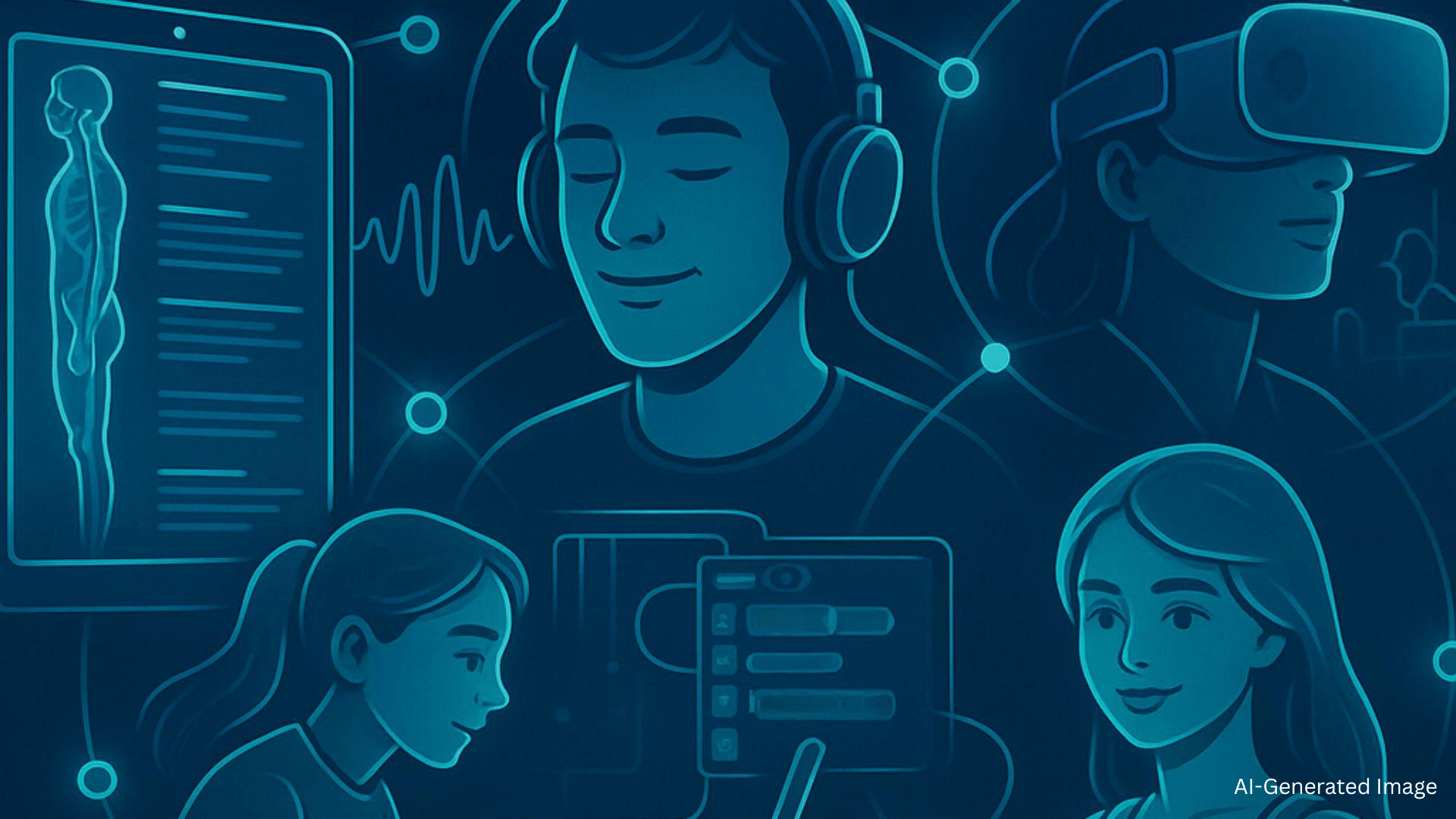5 Trends Shaping the Future of Healthcare
How emerging tools and formats redefine patient care, health communication and medical innovation.
The health sector is facing a wave of disruption. New technologies, evolving user expectations, and social shifts are redefining how we think about care, communication, and prevention. At vm-people, we constantly explore what’s next and how brands can shape meaningful experiences from these changes. Below are five key developments that signal where the healthcare journey is heading.
1. AI as a Certified Medical Assistant
Artificial Intelligence is no longer just a background tool – it’s becoming a certified front-line helper.
German publishing house Thieme has taken a pioneering role with its AI-powered eRef Assistant: the first German-language medical assistant based on verified internal data. Developed in collaboration with the Viennese HealthTech startup XUND, the tool supports clinical decision-making and offers reliable symptom-based guidance for patients.

The AI system is embedded within a certified quality management framework and aims to relieve professionals, empower patients, and deliver valid, contextual information exactly where it’s needed.
2. Interactive Audio: From Passive Listening to Active Learning
A new generation of audio formats is putting listeners in charge of the story.
The platform TWIST by German startup EarReality uses a branching storytelling approach, enabling users to make choices that influence the narrative. While currently focused on entertainment, this model holds enormous potential for health education and behavior change.

Imagine personalized rehab journeys, decision-based training for medical staff, or audio-guided diabetes self-management programs for instance that respond to patient input. What works for engagement in media could soon power motivation and understanding in care.
3. AI Avatars as Digital Buddies
In the future, your personal health coach might just be a lifelike avatar.
In the TALAINTED project, initiated by Stuttgart Media University and Hacker School, realistic, multilingual video avatars guide teenagers through programming lessons. These digital companions appear in short, animated videos, adapting to learners‘ preferences and pace. Results from a pilot study showed increased motivation, concentration, and self-efficacy.

The same technology could soon support patients in tutorials for insulin use, guide them through rehabilitation steps, or even offer tailored app walkthroughs – humanized, scalable, and multilingual.
4. Social VR for Self-Help and Support
The metaverse is becoming a space for healing.
In a pilot project with Yale University, young cancer patients met on the social VR platform Foretell Reality for anonymous, therapist-led self-help sessions. The immersive format created a safe, emotionally resonant space for open sharing and support. Scientific evaluation confirmed strong emotional impact and user acceptance.

Such formats are now being tested for other groups – from stressed healthcare professionals to teens in need of relaxation strategies. VR avatars enable participation beyond physical barriers and may reduce the stigma around seeking help.
5. Representation in Play: Barbie Gets Diabetes
Sometimes, a plastic doll says more than a thousand brochures.
Mattel has introduced the first Barbie with Type 1 diabetes – complete with an insulin pump and blood sugar sensor. Developed with medical experts, the doll responds to a growing demand for representation in children’s toys. Studies show that children who see themselves in their toys develop higher self-esteem and resilience in managing chronic conditions.

The diabetes Barbie normalizes illness, reduces stigma, and creates talking points in families and schools. It also offers inspiration for digital health communication: make it personal, relatable, and visual.
The Bigger Picture: From Tech to Transformation
At vm-people, we don’t chase trends for the sake of novelty. We explore them for what they enable – especially in fields like health and wellbeing, where the stakes are human.
What connects all five developments above is not the technology – it’s the shift in mindset: from one-way information to two-way interaction. From abstract knowledge to real-life experience. From isolated tools to ecosystem thinking.
In a world where health is no longer a one-size-fits-all service, these trends help build bridges – between brands and users, between knowledge and emotion, between challenges and solutions.

